A doppelgänger is a mysterious, exact double of a living person. It’s a German word that literally translates to “double walker” or “double goer”. A doppelganger isn’t someone who just resembles you, but is an exact double, right down to the way you walk, act, talk, and dress. A friend or even a close relative who encounters your doppelganger will swear it was you, even though you can prove you were not in the location the double was sighted. Although the word doppelgänger is often used in a more general and neutral sense, and in slang, to describe any person who physically resembles another person, in German folklore it is used to described a wraith or apparition of a living person, as distinguished from a ghost. The concept of the existence of a spirit double, an exact but usually invisible replica of every man, bird, or beast, is an ancient and widespread belief. To meet one’s double is a sign that one’s death is imminent. The doppelgänger became a popular symbol of horror literature, and the theme took on considerable complexity. In The Double (1846), by Fyodor Dostoyevsky, for example, a poor clerk, Golyadkin, driven to madness by poverty and unrequited love, beholds his own wraith, who succeeds in everything at which Golyadkin has failed. Finally the wraith succeeds in disposing of his original. An earlier, well-known story of a doppelgänger appears in the 1815 novel The Devil’s Elixir, by the German writer of fantastic tales E.T.A. Hoffmann. In fiction and mythology, a doppelgänger is often portrayed as a ghostly or paranormal phenomenon and usually seen as a harbinger of bad luck. Other traditions and stories equate a doppelgänger with an evil twin. In modern times, the term twin stranger is occasionally used.
Sightings and reports of doppelgangers have been around for centuries, and a great deal of superstition has developed around them. Traditionally, they have been viewed as sinister or even evil entities. Seeing a doppelganger has also been considered an omen of misfortune or bad luck. Most often today, however – as reports of doppelgangers show – they seem to be neither sinister nor evil, nor do they herald streaks of bad luck. (Although some have been known to cause mischief.) They just seem to be, going about their business as if they are normal human beings. And perhaps they are. Many reports of doppelgangers are probably cases of mistaken identity, but such an explanation becomes harder to accept when they are seen by best friends, siblings, and parents who know the real person intimately. It seems hard to believe that they would be fooled by another person who simply resembles the original. And how likely is it that they would have the exact same haircut and clothes, as is so often reported? Doppelgangers are frequently used as a plot device in literature, television shows, and movies. They are often evil in nature, but sometimes they are used for comedic effect, too. Art is another common place where this phenomenon can be found, as is the case of museum doppelgangers. One of the most famous example’s of a doppelganger is in Edgar Allan Poe’s short story, William Wilson. In this tale, the main character meets his doppelganger as a child. He is persistently followed by the copy, who causes trouble in the character’s life. And when the main character tries to do evil or unethical things, the doppelganger tries to stop him. But in a rage, the protagonist kills his doppelganger, but he realizes it is a reflection of his own self.
Before people began taking photos with our twin strangers on social media, meeting your doppelgänger was considered a bad omen. According to both English and German folklore, seeing your own double three times could mean that death would soon follow. The German word translates to “double-goer,” a name given to the specter of a human being seen while the one it resembles still lives. While the term “doppelgänger” was coined in the late 18th century, myths of spirit doubles have persisted for thousands of years. In ancient Egypt, the ka was one aspect of the soul, depicted as a spirit identical to the body. Throughout Europe and parts of Africa, changelings were thought to be supernatural children left in place of human infants. The Norse vardøger was less ominous in nature, simply appearing in a place before the person it resembled, leading others to believe they had already arrived. English and Irish literature of the 18th and 19th centuries speaks of the fetch, an ethereal double whose appearance, like the doppelgänger, signalled death. As a literary device, the doppelgänger is perfectly suited for exploring human duality, often used to personify the darker traits of a character. The double may also serve as a foil to the protagonist’s personality, a behavioral negative as in Hans Christian Andersen’s 1847 fairy tale Skyggen, or The Shadow. In the fairy tale, a man’s shadow separates from his body and gradually becomes his walking double, demonstrating the exact opposite physical and moral traits and eventually replacing him entirely.
Doppelgänger sightings have been reported throughout history, with varying degrees of substantiation. English writer Izaak Walton shares a disputed account of John Donne and his wife’s doppelgänger in his biography of the poet. One night in 1612, while staying in Paris, Donne was discovered in a deeply disturbed state. “I have seen a dreadful vision since I saw you: I have seen my dear wife pass twice by me through this room, with her hair hanging about her shoulders, and a dead child in her arms,” Donne reportedly said to his witness. “I cannot be surer that I now live than that I have not slept since I saw you: and am as sure that at her second appearing she stopped and looked me in the face, and vanished.” Walton then claims that a messenger was immediately dispatched to check on Donne’s wife, returning with the news that she was in very poor health after losing their child. Among the many myths and rumors surrounding Catherine the Great, one tale recounts her servants discovering her double sitting on her throne while she slept. The empress ordered the imposter to be shot, and died of a stroke several weeks later. In his autobiography, Johann Wolfgang von Goethe describes a benign but prescient encounter with his double on horseback. The sighting, occurring in the early 1770s on his way to Drusenheim, was of his spectral self in unfamiliar attire, passing without a word. Years later, Goethe once again found himself traveling that road, this time incidentally wearing the grey coat of his premonition. One popular story is when Abraham Lincoln saw his look-alike in 1860. He supposedly saw his reflection doubled in the mirror, with one face beside the other. He saw this three times, and his wife, Mary Todd, was worried that the vision meant he would serve two terms, but would die before the end of the second.
Addressing the prevalence of historical doppelgänger accounts, Catherine Crow writes in The Night-Side of Nature, or, Ghosts and Ghost-seers, “We might, indeed get rid of them by denying them, but the instances are too numerous, and the phenomenon has been too well known in all ages to be set aside so easily.” To provide a pragmatic explanation, psychologists have identified neurological conditions like heautoscopy in which one hallucinates their own image at a distance. This may explain many cases in which the original was the only one to see their double. Sightings by multiple witnesses still lend themselves to supernatural supposition, however. As Crow observes, the doppelgänger is often said to appear as one sleeps or falls ill. This has led to a belief that when our bodies can no longer hold on so tightly, our spirits may be free to wander. there is one more theory: a doppelgänger could represent a parallel universe in which everything in this world is replicated in another dimension. Seeing the doppelgänger could be a moment when we’re able to witness the other dimension. While doppelgangers are usually associated with bad luck and ill omens, coming across your doppelganger does not have to be a terrifying experience. It is certainly strange to find someone who looks, talks and dresses just like you, but speaking with the doppelgänger can be a rewarding experience. It can give you unique insight into areas of yourself. The context of doppelgänger encounters may be determining factor of how they are perceived. If you see your double in line at the airport, you may naturally find the resemblance amusing and snap a photo. Your reaction may be different if, when going to bed, you find that you’re already there.

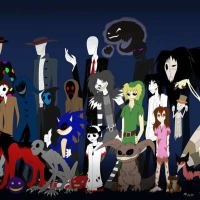


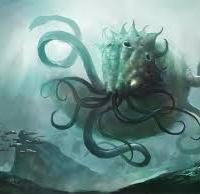

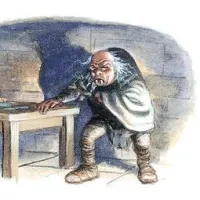



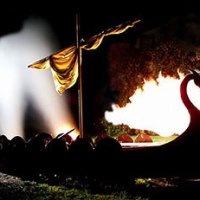



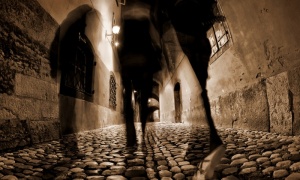


An illuminating and thought-provoking piece. It reminded me of one of my favourite films, ‘The Double Life of Veronique’ – a beautiful French-Polish film from 1991 directed by Krzysztof Kieślowski, which explores the parallel and intersecting lives of the French Veronique and her Polish doppelganger Weronika.